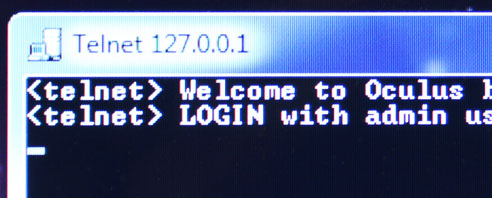News
Oculus Software Update featuring The Telnet Progamming Interface

The latest update to our Oculus-Java server software features the powerful Telnet Programming Interface. It allows programming and automation of the Oculus Robot using virtually any programming language that supports socket connections and text manipulation. Simple scripts can have complete control of the robot by conversing with the server using 70 Oculus Text Commands. A new Programming Oculus section has been added to the documentation, including some example scripts.
With the Telnet Interface you can, for example, write scripts that give Oculus automated surveillance capabilities with the new motion and noise detection command: setstreamactivitythreshold. If detects anything, it can send an email or post an item to the new Oculus RSS feed.
The update is available for download on our download site, or via. auto-update within the Oculus web-client (go to menu > server menu > check for software update).
New in Release Build 643
- telnet interface incl. output tags, access to all text commands
- ‘help’ command with quick help for individual commands
- ‘oculus text command’ in advanced menu in web client
- argument checking for commands, telnet interface
- improved Linux com port discovery
- Linux support for quit + restart,
- Linux ‘speech’ command binds to espeak
- Linux support for remote system volume, monitor/screensaver on/off
- Linux support for auto software update
- video activity (motion) threshold
- audio activity threshold
- ‘getlightlevel’ command
- ‘email’ command using smtp server settings
- ‘analogwrite’ and ‘digitalread’ commands (ArduinOculus firmware v. 0.5.5+)
- moved autodock vision to java (formerly in actionscript), speed improvements
- improved autodock imaging, reduce false-positive dock detections when not visible
- RSS feed, and ‘rssadd’ command
- key binding ‘M’ to open/close menu in web client
- bugfixes
|
Posted by xaxxon on January 02, 2013
|
share→
|
|
view all news
|
|

|
|
|
|
